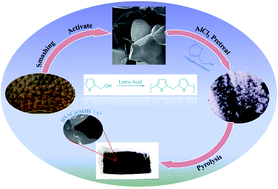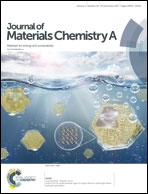Sulfur-doped carbon employing biomass-activated carbon as a carrier with enhanced sodium storage behavior†
Abstract
Restricted by their high specific surface area and porous structures, activated carbon (AC) materials display poor performances, such as a low initial coulombic efficiency in sodium-ion batteries (SIBs). Nevertheless, it is an ideal choice for carriers, where the high specific surface area is indispensable. Herein, a novel strategy to design S-doped carbon employing durian shell-based AC (DSAC) as the template is proposed and the effect of the amount of DSAC additive was investigated in detail. Impressively, an optimized amount of DSAC additive would contribute to the good dispersion of poly-2-thiophenemethanol (sulfur source) as well as an increased number of active sites for Na storage, thus resulting in excellent electrochemical performance. A high reversible specific capacity of 345 mA h g−1 was attained and the specific capacity of 264 mA h g−1 was retained after 200 cycles. In particular, a high initial coulombic efficiency of 56.02% and remarkable rate capability of 100.02 mA h g−1 were achieved at 5 A g−1 even after 4500 cycles. Meaningfully, the proposed route used to prepare carbon materials for SIBs can effectively facilitate the further application of AC and the construction of high-performance electrode materials for SIBs.



 Please wait while we load your content...
Please wait while we load your content...